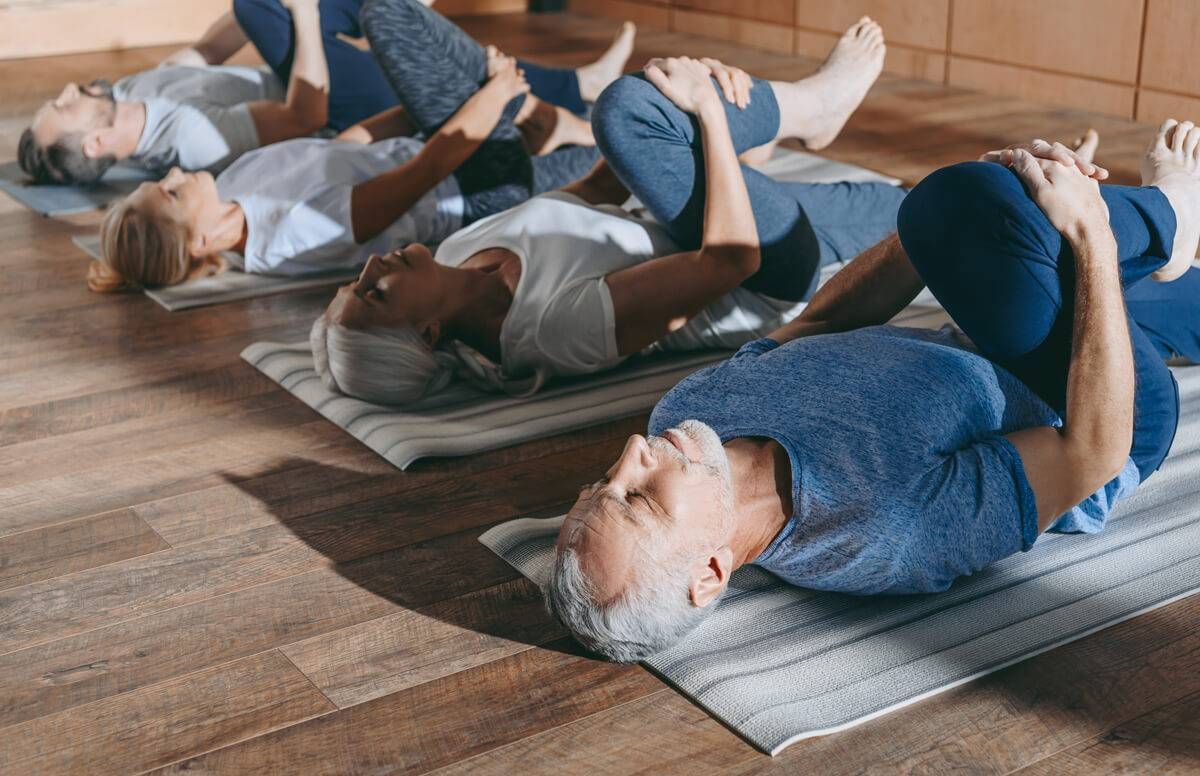Why Some People Are Turning to Stretch Studios
They tout benefits of stretching, though evidence is not conclusive
I consider myself a fairly flexible person. I practice yoga regularly and spend a few minutes most evenings stretching or using my foam roller.

But over the past few months, I’ve let my flexibility practice slip and have noticed a stark change in my mobility. When I get up from my desk, my back hurt and knees creak. Everyday movements no longer feel good. I can’t sit cross-legged on the floor or cross my legs without my hip flexors screaming in protest. Sure, my tight muscles may be a side effect of age, but I want to stay active and keep moving as I get older.
I tried everything to convince my muscles and joints to release their death grip and relax — more foam rolling, anti-inflammatories, heat and acupuncture — but nothing seemed to work. In a last ditch effort to feel better, I signed up for a one-on-one stretch session at LYMBR, a boutique stretching studio that claims to improve flexibility, reduce stress and improve quality of life.
For 30 minutes, a “stretch therapist” moved me through a wide range of positions. And I’m not going to lie — it felt reallygood. At the end of my session, I felt more relaxed and fluid, like my joints received an oil change.
How Does Assisted Stretching Work?
Practitioner-assisted stretching is one of the latest trends hitting the fitness world, with studios like LYMBR, StretchLab, Stretch Zone, Stretch*d popping up all over the country. “While we know that stretching is good for us, none of us do it enough,” says Lou DeFrancisco, president of StretchLab. Dedicated stretch studios aim to fill that void.
Proponents claim that personalized stretch sessions reduce stiffness and soreness, and increase range of motion. When mobility improves, your muscles work more efficiently and your body is in better alignment. As a result, you move better and may improve athletic performance. “It’s an experience where you leave feeling energized,” says DeFrancisco.
Assisted stretching is nothing like a yoga class. Instead, sessions are personalized to meet an individual’s unique needs and can run anywhere from 25 minutes to over an hour. While requirements vary by studio, typically therapists are certified in personal training, massage therapy, chiropractic, or physical therapy. They undergo additional training in the studio’s specific stretching methodology.
At LYMBR’s New York City studio, Christine Cody, my stretch therapist, conducted a visual assessment before I lay down on one of several massage tables. She strapped a belt across my body to stabilize my pelvis and then guided my one leg through multiple positions, holding it in the lengthened position for a beat or two before releasing and repeating the sequence several times on each side. Sometimes, she instructed me to change the position of the foot in order to target a specific muscle or muscle attachment.
“If you think of your muscle as a garden hose with a knot in the middle, a masseuse may work the knot out of the muscle but it will still be coiled. We stretch the muscle and gain length while still working out the knot,” says Cody. She says the repetitive movement flushes blood to the area, which means muscles recover and lengthen faster.
Still, I was nervous as Cody stretched me near the end of my range of movement. But as she continued to move my legs and hips into various pretzel-like positions, I relaxed and let go.
What Are the Benefits of Stretching?
Research indicates that women and adults over 65 respond better than men and younger adults to static stretching. A study in the Journal of Exercise, Sports & Orthopedics found that long-term static stretching improved flexibility and muscle strength in older adults. In another study, eight weeks of flexibility training improved spinal range of motion of older adult women.
Static stretching of the hips was shown to be potentially helpful in reducing fall risk by improving participants’ gait.
But the main benefit? One-on-one attention. “Our flexologists put you in the right position so you don’t get hurt and they give you a deeper stretch than you would get on your own,” says DeFrancisco.
Still, experts disagree whether or not stretching offers any real benefits such as a reduced risk of injury. A review published in the Journal of Agingfound that more research is needed to determine the impact of flexibility training on the functional ability of older adults.
In addition, while it feels like you’re lengthening your muscles, Doug Kechijian, a physical therapist and co-founder of Resilient Performance Physical Therapy, says your body isn’t actually very malleable. “When you stretch, your muscles don’t physically change but your perception does. You’ve tricked your nervous system and have convinced it that it’s OK to be in that lengthened position,” he says.
Should You Spend Money on One-on-One Stretching?
Whether or not individualized stretching is for you depends on your personal goals, health history and activity level.
“Ask yourself why you’re stretching,” says Kechijian. Is it to improve your balance, reduce pain, or prevent injury? While stretching may be one way to achieve that goal, it’s not the only way. For example, strength training may actually be more beneficial for some people. According to Kechijian, you need the structural stability and strength developed through resistance training to support a greater range of motion, especially as you age.
The bottom line: If you want to try a one-on-one stretch session or you enjoy the way it feels, go for it, but know that the benefits aren’t guaranteed. If you’re in pain or injured, it’s best to see a physical therapist instead who can provide more targeted therapy and corrective exercises.

